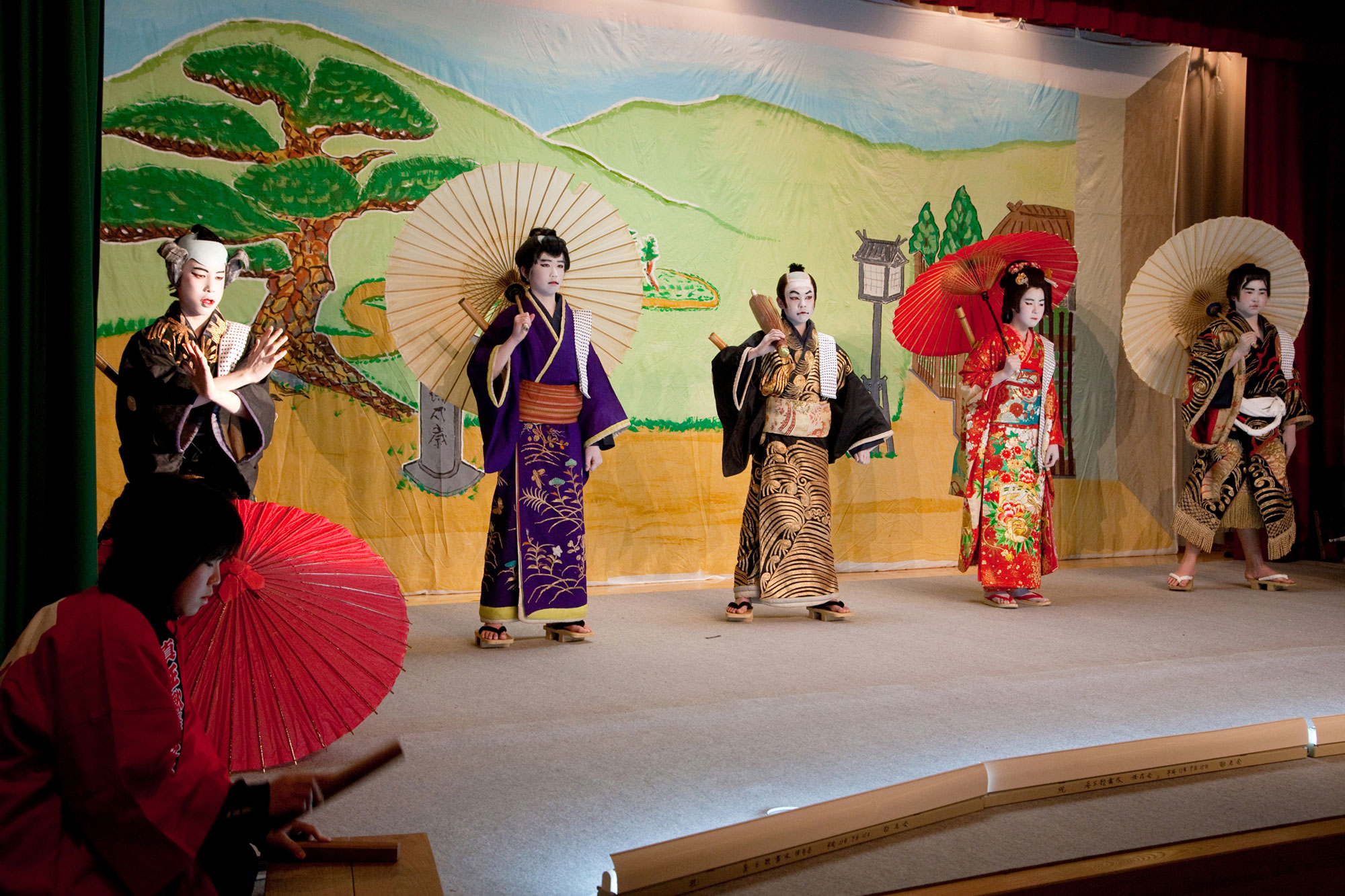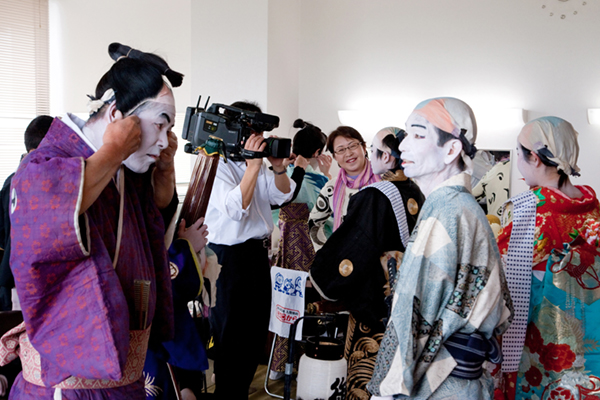

- Kunisaki Peninsula
- Traditional Arts・Festival
Matama Kabuki
Photography/TAKEUCHI Yasunori
Unifying the Stage and the Audience
Junior high school students pose on stage as the famous Shiranami Gonin Otoko (“Five Men of the White Waves”). Next, adults come in for “Yuki no Akebono Fushimi no Sato” (“Snowy Dawn in the Village of Fushimi”) The stage and the audience are unified, swelling with endless applause and cheers. After all, all the people on stage and in the audience are familiar faces. People who’d greet each other if they passed on the street.
Matama Kabuki is performed by members of its Preservation Society, with special appearances by Matama Junior High School students as well. With over 200 years of history, this performing art has been well-protected. That said, it has not been entirely continuous. Although the Preservation Society was formed during the post-war period after a long suspension, activities had stopped once again due to aging and lack of successors. But now, it has been miraculously revived.
In the Matama region, various performing arts such as kabuki and kagura (ancient court music) were once vibrant in people’s lives. Feeling that they could not abandon it, people in the region became fervent. One reason for this is said to be a municipal merger. The name of Matama must not disappear. The feelings of the people matched those of the government, and the former town hall was turned into a culture center complete with a stage. As long as this drive exists, Matama Kabuki is sure to bathe in applause in a variety of places.
Long ago, kabuki and puppet theater were held all throughout Oita. Sanjo Theater was famous in Bungotakada, while in Nakatsu there was a famous puppet theater, apparently named Kitahara Sansho. The word sanjo and sansho are both thought to stem from a word meaning “sub-shrine,” a settlement which served lords and temples mainly with entertainment and transportation in ancient times. It is thought that Usa Hachiman Shrine and shrines associated with Hachiman had several sub-shrines throughout the prefecture.
Did each follow a Hachiman, with Matama for Matama, Sansho for Wakamiya, Kitahara for Usa, as well as Kushimi Rural Kabuki for Imibetsu Shrine and Kitsuki Kabuki for Kitsuki Wakamiya? Kitsuki Kabuki costumes remain at the history museum, and Ekiken Kaibara writes in his Houkoku Travelogue, “Going around the provinces, singing, dancing and performing puppets.”

Matama Kabuki, a tradition of over 200 years supported by local passion. Members of the Preservation Society go on stage, where local junior high school students give special performances.

